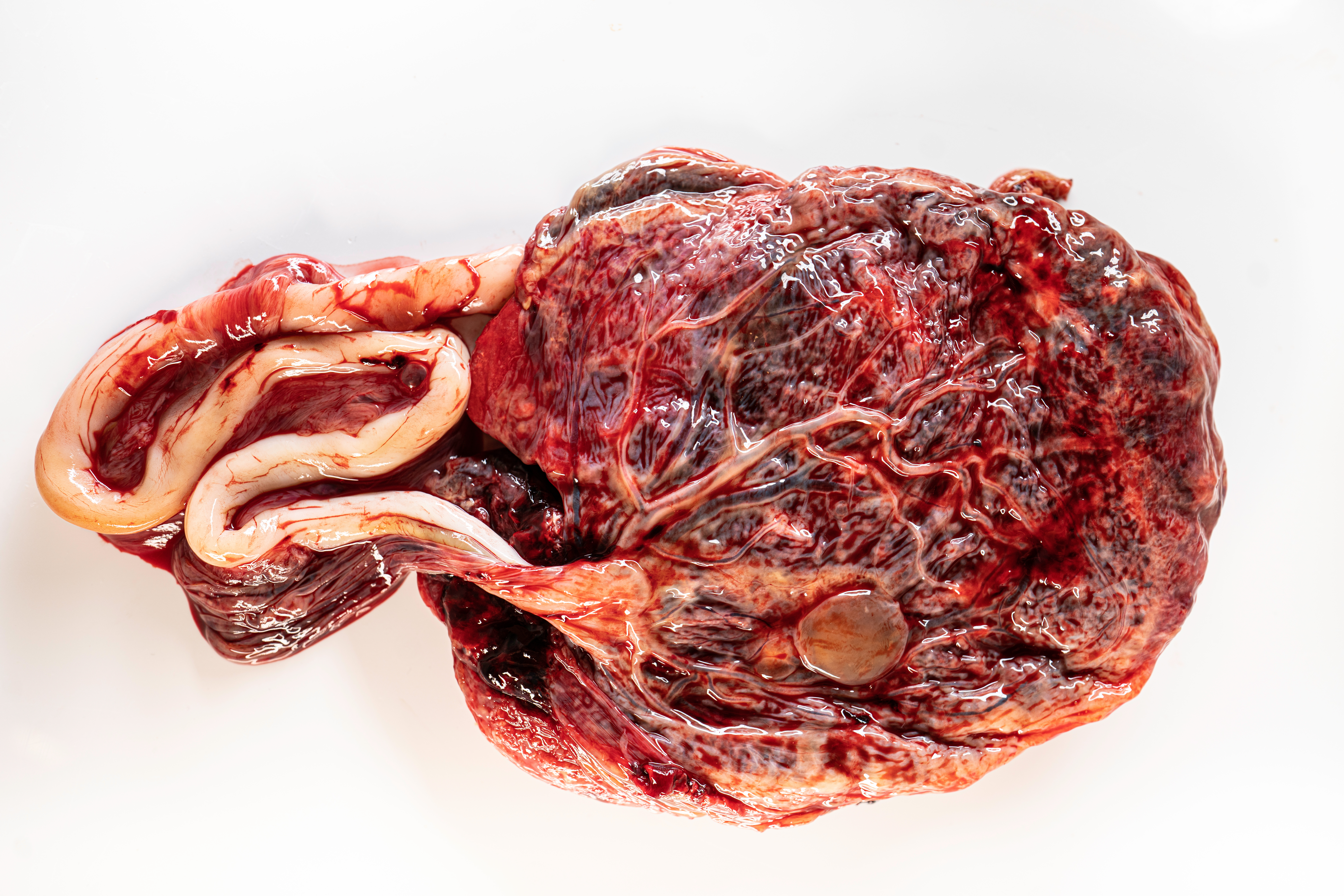Are you pregnant and considering your options when it comes to managing pain during your labor and delivery process? Perhaps you’re hoping to avoid using medications but wonder if you’ll be able to handle labor pain, or maybe you’ve had a previous experience with (or without) labor pain management that you don’t want to replicate.
When I had my first child, I opted for an epidural when the contractions began to feel overwhelming. I soon learned the startling meaning of the words “The epidural will help the pain but not the pressure” as I experienced excruciating pressure from back labor, unrelieved by the epidural. Then when it came time to push, I struggled because I couldn’t feel a thing.
For my second birth, a veteran labor and delivery nurse honored my desire to avoid an epidural “if at all possible” or at least “for as long as possible,” coaching me through various positions, walking, dancing, using the birthing ball, etc. What a difference her compassion and professional expertise made in my experience, which ultimately included a shot of intravenous (IV) Nubain (a narcotic), but no epidural.
Whether you’re excited for an epidural (and many women have excellent experiences with them!) and simply looking to cross your t’s and dot your i’s when it comes to knowing pros and cons, or your plan is for no-meds and high support from a team of people like your significant other, mom, and/or a doula, read on to explore important points regarding your labor pain management options.
How do you look at labor pain?
Nurse researcher Rebecca Dekker founded the website Evidence-Based Birth to help pregnant women learn what labor and delivery practices are (or aren’t!) backed by research, and she described the two prevailing perspectives in our modern society on pain during labor.
The first perspective is the “pain relief” paradigm, which views labor pain as “unnecessary” and which believes “that the benefits of pain-relieving medications always outweigh the risks. This perspective is very common in today’s society. Doctors and nurses are often taught that relieving pain is one of their number one priorities as healthcare workers.”
Dekker calls the second perspective the “working with pain” or “coping with pain” perspective. This was historically the perspective on pain in childbirth when epidurals and IV pain medications were not available, and it’s a view still held today by many healthcare professionals, such as certified nurse midwives (CNMs) and birth workers like doulas. In the “working with pain” perspective, “labor pain is a normal part of the birth process and it’s purposeful and productive. For example, the sensations that you might feel during labor compel you to move around and shift positions, and that helps labor progress faster and with fewer complications.”
Pharmacological (medication) labor pain relief options
The American College of Obstetricians and Gynecologists (ACOG) breaks down pharmacological options into two categories: analgesics, which “lessen pain without loss of feeling or muscle movement” and anesthetics, which “ relieve pain by blocking most feeling, including pain.” Here we’ll cover two analgesic options: intravenous (IV) pain medicine, and nitrous oxide (N2O). We’ll also cover the most common anesthetic option, epidurals. (We won’t cover spinal blocks, which are similar to epidurals but last for a much shorter period of time and are commonly used during Cesarean sections, but more info can be found on them here.)
Intravenous (IV) pain medicine
A dose of an IV narcotic such as Nubalphine (Nubain) or Meperidine (Demerol), which enters the bloodstream and decreases pain perceptions throughout the body, may help “take the edge off” for some laboring women, as it did for me. These medications last for a few hours in the body, and side effects can include drowsiness and sleepiness, as well as “nausea, vomiting, decreased respirations, itching, constipation and urinary retention.” Because a small amount of IV pain medicine will reach the baby, IV narcotics are not typically given if the woman is expected to give birth within the hour because they can make the baby sleepy (and sleepy babies won’t breastfeed as well upon birth, which is necessary for a whole host of reasons for both mother and baby).
Nitrous Oxide (N2O)
Did you know that some hospitals and birthing centers offer women the option of using “laughing gas,” an analgesic sometimes associated with mild sedation for dental procedures, to manage labor pain? Nitrous oxide (N2O), which is technically nitrous oxide gas mixed with oxygen, is very short-acting and can help women feel more relaxed and less anxious during contractions with minimal to no felt impact in between them. A woman using N2O inhales it from a mask she holds up to her nose, ideally starting 30 seconds before a contraction starts, and she exhales back into it.
NO does not reach the baby, does not effect the release of oxytocin, and will not affect breastfeeding outcomes. However, side effects for the mother can include sedation, dizziness, nausea, and vomiting.
Epidurals
“Epidural” refers not to a particular medicine, but to the epidural space in the back just next to the spinal cord where anesthesia is injected. An anesthetist administers epidurals, and the laboring woman hunches over to round her back for 10-20 minutes, including through contractions, while her skin is prepped and the epidural is placed.
Epidurals are considered “regional” anesthesia because they affect a certain region, not the whole body. They numb the lower part of the body (generally around the belly button down) and are considered a very effective form of pain relief. Interestingly, the popularity of epidurals varies across the country. According to Reuters, “Researchers who analyzed more than 2.6 million deliveries in 2015 found the proportion of women receiving epidurals or spinal blocks to manage pain during labor ranged from a low of 25 percent in Maine to a high of 79 percent in Nevada.” Unlike general anesthesia, epidurals do not cause nausea or vomiting, and can be good for helping an exhausted laboring woman to rest up and relax, especially if she has been laboring for a particularly long time.
Things to be aware of with an epidural: Epidurals will drop mom’s blood pressure so if you get an epidural you will automatically be started on an IV fluid infusion to counteract this expected drop. In most cases, you will also be unable to walk until the epidural wears off, and may need a catheter to help drain urine since you won’t be able to use the bathroom. There is a possibility for what’s called a ‘walking epidural,’ meaning that the dosage is low enough for you to achieve ‘good to fair’ pain control and retain some sensation and perhaps even walk a few feet. If this is something you’re interested in, be sure to discuss it with your provider ahead of time as walking epidurals are uncommon.
Among other potential cons of epidural use, blocking the nerves from transmitting pain signals means that your brain doesn’t receive the chemical signals to release powerful birth hormones like oxytocin to the same extent that an unmedicated woman’s body would. This is why an epidural given too early in the labor process can actually slow down the dilation of the cervix and/or the baby’s descent into the birth canal. Sometimes epidurals cause women to develop a fever, which is difficult to differentiate from fevers caused by infection that can be dangerous for both mom and baby and require quick recognition and treatment. Finally, research is conflicting as to whether epidural use also correlates with a higher likelihood of Cesarean section.
How do I decide what—if any—pharmacological pain management to use during labor and delivery?
In her book Made for This, childbirth educator and doula Mary Haseltine offers a list of questions to ask yourself as you consider whether you want pharmacological pain management during labor.
Among them:
- What are my reasons for not wanting/wanting to receive medication?
- Will this medication affect my emotions, my ability to be fully present during my birth?
- What are the possible risks and benefits to my baby with this approach?
- What are the possible risks and benefits to me with this approach?
(Haseltine, 146)
Nonpharmacological (non-medication) labor pain relief options
Just because you opt out of using pharmacological pain relief does not mean that you have to endure the pain of labor and delivery completely on your own. In fact, there are many tools and techniques that women can use to relieve—and work with—the pain of childbirth outside of pharmacological interventions. With the following forms of non-medication pain relief, preparation (with your significant other and/or doula, if possible) beforehand is key.
Water
Many birthing centers and some hospitals offer women in active labor access to a birthing tub. As Mary Haseltine notes, “A hot tub can feel amazing during active labor… Not only does pain and pressure become alleviated, but being submerged in the water helps you to enter into different positions and relieves the weight of your body, helping you to better relax” (Haseltine, 137). Even when a birthing tub isn’t an option, many women report relief from taking a hot shower during labor.
Deep breathing
While strict, controlled breathing patterns such as the original Lamaze method approach are no longer taught in childbirth classes, many childbirth classes do educate women on deep breathing, particularly what’s called abdominal breathing, in tandem with other non-medication measures such as relaxation, visualization, guided imagery, progressive muscle relaxation, etc.
Ina May’s Guide to Childbirth, a widely recommended resource for women seeking an unmedicated labor, reads “Deep abdominal breathing causes a general relaxation of the muscles of the body, especially muscles of the pelvic floor… deep abdominal breathing is not only relaxing to the heart, the nervous system, and the mind, it also allows for the greatest lung expansion” (Gaskins, 200-201).
Physical comfort measures
Warm packs (like these DIY ones you can make at home) can often help alleviate back pain during labor. Counterpressure from a birth partner (whether from your spouse, doula, or someone else) to the lower back and hips can also provide laboring women with pain relief. This can be provided by your birth partner using their physical strength to squeeze your hips or back, or with the help of a long, skinny piece of cloth material, often called a rebozo. Massage of the shoulders or back, thighs, or temples can aid in the relaxation necessary for effective dilation of the cervix.
Physical position changes
Walking, swaying, and “dancing” can all help loosen the laboring woman’s hips, and have the added benefit of working with gravity to encourage the baby to get into position to move down the birth canal. Sitting on an exercise ball, especially in combination with gentle hip circling motions, can also help women relax. Some women find pain relief through a hands and knees position (which can be assumed on a soft bed and needn’t be on a hard floor!) or through deep squatting. My labor and delivery nurse with my second birth actually recommended sitting backwards on the toilet in the bathroom, and I was surprised to find that it really did help open up my hips (if your hospital, birth center, or midwife has a birthing chair or squat bar, even better!).
While stereotypically, women delivering in hospitals lie down on beds for their labor and delivery, research suggests that women who labor in upright positions actually have “shorter labors, are less likely to request an epidural, and are less likely to have a Cesarean.” According to Ina May’s Guide to Childbirth, laboring upright leads to “better use of gravity, maximum circulation between mother and baby, better alignment of the baby to pass through the pelvis, stronger rushes (contractions), [and] increased pelvic diameters when squatting or kneeling” (Gaskins, 261). If you want to labor as naturally as possible, it is essential that your freedom of movement be as uninhibited as possible.
A word on doulas…
Increasingly, pregnant women, especially those seeking to avoid pharmacological pain relief in labor, are choosing to hire doulas to provide them with continuous emotional support during the labor and delivery process, and sometimes during the postpartum period as well. The state of Rhode Island recently passed a law ensuring that both private insurance companies and Medicaid cover doula services for pregnant women. And, many communities seeking to drive down maternal mortality rates, particularly the unacceptably high rates amongst women of color, are turning to doulas.
Shannon Bacus, an Illinois-based birth doula, told Natural Womanhood, “Hiring a doula to support you throughout your pregnancy, labor, and birth does not insure the outcome of your birth experience, but research does show that women working with a doula have significantly better birth outcomes” and that “clients who receive continuous labor support are 10% less likely to need medicated pain relief, and are 31% less likely to be dissatisfied with their birth experience, despite outcomes.” Bacus further commented, “In my doula practice, I get the privilege of seeing these statistics come to life at a much more favorable rate to my clients. By providing continuous labor support, intuitively responding to the families’ present needs, utilizing position changes and pelvic pressure, I find mothers who have prepared for an unmedicated birth and understand how their body is working together with their baby are empowered and supported to accomplish their goal without medicated pain relief.”
No matter what kind of birth you are envisioning for you and your baby, it is important that you know you have options, and that your dignity (and your baby’s) during childbirth is respected by everyone in the room. No one choice is superior to another, and many women’s birth experiences end up looking vastly different from what they expected. Preparing for birth as much as you are able (whether by reading books or taking classes), and having an advocate who knows and respects your birth preferences—and who can advocate for you if you are unable to do so—can make all the difference, no matter what your birth ends up looking like.
Birthing resources:
Made for This: The Catholic Mom’s Guide to Birth by Mary Haseltine
Ina May’s Guide to Childbirth by Ina May Gaskins
Juju Sundin’s Birth Skills: Proven Pain-Management Techniques for Your Labour and Birth, by Juju Sundin
Additional reading:
Addressing Our Maternal Mortality Crisis with Fertility Awareness
So You’re Going to Give Birth in the United States… What are your Options?
Can semen prevent preeclampsia?
What You Need to Know if You’re Pregnant or Nursing During the COVID-19 Pandemic
Tokophobia: The pathological fear of pregnancy or childbirth
Three Science-backed, Natural Ways to Ease Childbirth and the Postpartum Period
Pregnancy Fears and What to Do About Them
Everything You Need to Know about Postpartum Bleeding, aka Lochia











